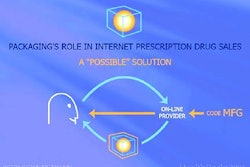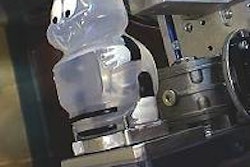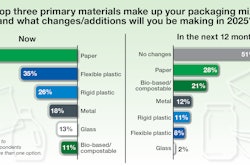Freshness guaranteed? Grocers, florists and even pharmacists may soon have a better way to monitor the quality of the products they get from suppliers: a sensor that will tell how long before a product spoils or passes its expiration date.
A team of University of Florida students in Gainesville has designed and built a prototype of a new smart sensor that can record and wirelessly transmit information to retailers about when and where glitches occur as a product is being shipped.
“We think this sensor will make the perishable supply chain safer and more efficient,” says Bruce Welt, an assistant professor of agricultural and biological engineering and a faculty adviser on the project. “Hopefully, that will translate into lower cost, better quality products for consumers.”
According to the university, many shippers today are reluctant to use disposable tags or labels that turn color or otherwise indicate if a product has passed its prime. One problem is that the tags don’t say when spoilage occurred. Nor do most indicate whether “fresh” goods will soon spoil. The former can make it hard to decide who is responsible when a spoiled product arrives. The latter can result in stores stocking merchandise that appears fine, but quickly spoils.
Another problem is that products have different spoilage rates and temperatures, thus the tags have to contain different chemicals or otherwise be tailored to individual products. That raises their cost and increases the possibility of errors.
Shippers also rely on temperature monitors that indicate if, and by how much, a product’s recommended transport temperature has been exceeded. That’s a problem because the devices may record excessive temperature near only one pallet of many pallets stacked together in one shipping container. That can force the entire shipment to be discarded even if most remained very near or within temperature guidelines.
“The reality is that for small violations of these temperatures, the products are fine, but get thrown away anyway,” Welt says.
Based on sensor platform
With Bill Eisenstadt, an associate professor of electrical and computer engineering leading the technical development, six seniors majoring in engineering developed what Welt calls a “sensor platform.” It is capable of tracking and interpreting not only temperature, but also humidity, the shock during shipment, and other variables.
In the temperature setting, the half dollar-sized device checks the temperature. It then merges its readings with an algorithm, or set of computer instructions, that electronically mimics the spoilage characteristics of milk, fish, flowers or whatever product is being shipped. The device can communicate its results constantly and in real time via a wireless transmitter.
The result: Retailers can use a laptop to instantly check the status of an incoming product, learning not only whether it is fresh, but also how long it has until it spoils—and at what point, if any, that temperatures spiked above normal during shipping.
A retailer would learn, for example, that “this load of fish is fresh and has several days before it goes bad,” Eisenstadt says.
The sensor's integrating algorithms for product freshness prediction were developed by Welt.
The engineering student team is working with UF business and law students to patent and market the device as part of UF's Integrated Technology Ventures, a three-year old program that seeks to immerse students in entrepreneurial activities surrounding UF technologies. It has already spun off one Gainesville company.
Balance of features and value
Eisenstadt said one hurdle for marketing the sensor is finding the right combination of features and cost. The current sensor platform is designed for markets with stringent shipping standards such as pharmaceuticals but can be adapted and simplified to meet other needs.
Device highlights:
Power—battery-operated device has a life expectancy of one year or more.
Control—UF researchers selected Texas Instruments MSP 430 microprocessor because of low power requirements, cost, and software compatibility, according to Eisenstadt.
Communications—Sensor data is communicated via the ANT Protocol for wireless by Dynastream. "It uses very low power and gives a reasonable range," says Eisenstadt.
Future prototypes will permit the sensor platform to monitor shock and humidity.
Eistenstadt said a patent application has been filed for the device, and that the team recently received a $15ꯠ grant to continue developing the technology this summer.
This report was written by Aaron Hoover of UF, with additional details by Rick Lingle, Technical and RFID Editor of Packaging World.
Photo courtesy Kristen Bartlett/UF News Bureau
























